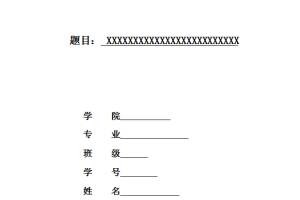摘 要
对于因果定向与工作压力的关系研究是组织行为学领域中长期被忽视的内容。而对于两者之间的关系也有着不同的观点和认识。现企业的各因果定向的员工,不管是为了得到自己所需求的,还是实现自身价值,都为了心中的目标所努力,随之而来的就是承受更多工作压力。本研究采用调查问卷的研究方式,以因果定向为调节变量,考察不同因果定向员工与其工作压力的关系作用。
本研究采用因果定向量表从203位被测人员选出了103位自主定向、60位控制定向和40位非个人定向,再使用工作压力量表对被测者探测其工作压力大小,最后分别统计个人定向、控制定向和非个人定向工作压力程度。
通过单因子方差分析和相关性分析,研究结果表明自主定向员工在处理工作压力方面表现最好,控制定向是工作压力最大的。
本文的研究结果对于企业管理具有积极的意义。管理者应该针对不同工作的不同工作压力,以及不同因果定向的员工,给其分配最适合的工作岗位,以此提高其工作效率。
关键词:因果定向;职业压力;员工;管理者
Abstract
Researches on the relationship of the causality orientation and occupation pressure is a content that has long been ignored in the field of organizational behavior. There are different views and understandings on the relationship between the two factors. Staff of the enterprises with different causal orientation views, either to get what she needs, or to realize their own value, all work hard to the hearts of the goal with their all efforts, however, the following is to bear more occupation pressure. This study used questionnaire approach to causality orientation as moderating variables, studied the effect of different causal orientation staff and the relationship of their occupation pressure.
From the study of 203 tested staff 103 independent directional, 60 control and 40 non personal orientation under the measure of Causal Orientation Scale were selected, and then their working pressure were observed under the Occupation Pressure Scale, finally, from the individual orientation, control directional and impersonal orientation aspects their occupation pressure were counted.
Through the single factor variance analysis and correlation analysis, the results shows that the self orientation staff are best in dealing with stress at work, the occupation pressure of control orientation is the greatest among these aspects.
The results of this paper have positive significance for enterprise management. Managers should treat the at the different occupation pressure in different work carefully, as well as to treat different causal orientation staff, It is better to assign the most suitable jobs to different staff, in order to improve their work efficiency.
Key Words:causality orientation;occupational stress;staff;manager
目 录
摘 要………………………………………………………………………………………………………… 1
Abstract…………………………………………………………………………………………………………… 2
插图或附表清单……………………………………………………………………………………………… 1
引言……………………………………………………………………………………………………………….. 2
1因果定向理论………………………………………………………………………………………………. 3
1.1归因……………………………………………………………………………………………………. 3
1.2因果定向…………………………………………………………………………………………….. 3
1.2.1自主定向……………………………………………………………………………………. 4
1.2.2控制定向……………………………………………………………………………………. 4
1.2.3非个人定向………………………………………………………………………………… 5
2压力与工作压力…………………………………………………………………………………………… 6
2.1压力……………………………………………………………………………………………………. 6
2.2工作压力…………………………………………………………………………………………….. 7
2.3工作压力与工作绩效…………………………………………………………………………… 8
3研究内容、方法及结果………………………………………………………………………………. 10
3.1研究内容…………………………………………………………………………………………… 10
3.2研究方法…………………………………………………………………………………….. 10
3.2.1被试…………………………………………………………………………………………. 10
3.2.2 测量工具…………………………………………………………………………………. 10
3.2.3 程序………………………………………………………………………………………… 10
3.2.4 数据处理…………………………………………………………………………………. 11
3.3研究结果…………………………………………………………………………………………… 11
4对研究结果的综合讨论………………………………………………………………………………. 13
4.1本研究结果……………………………………………………………………………………….. 13
4.1.1员工因果定向的特点………………………………………………………………… 13
4.1.2因果定向对员工工作表现的影响………………………………………………. 13
4.2本研究的意义……………………………………………………………………………………. 14
结 论………………………………………………………………………………………………………. 16
参 考 文 献…………………………………………………………………………………………………. 17
附 录……………………………………………………………………………………………………………. 18
在 学 取 得 成 果………………………………………………………………………………………. 20
致 谢………………………………………………………………………………………………………. 21





